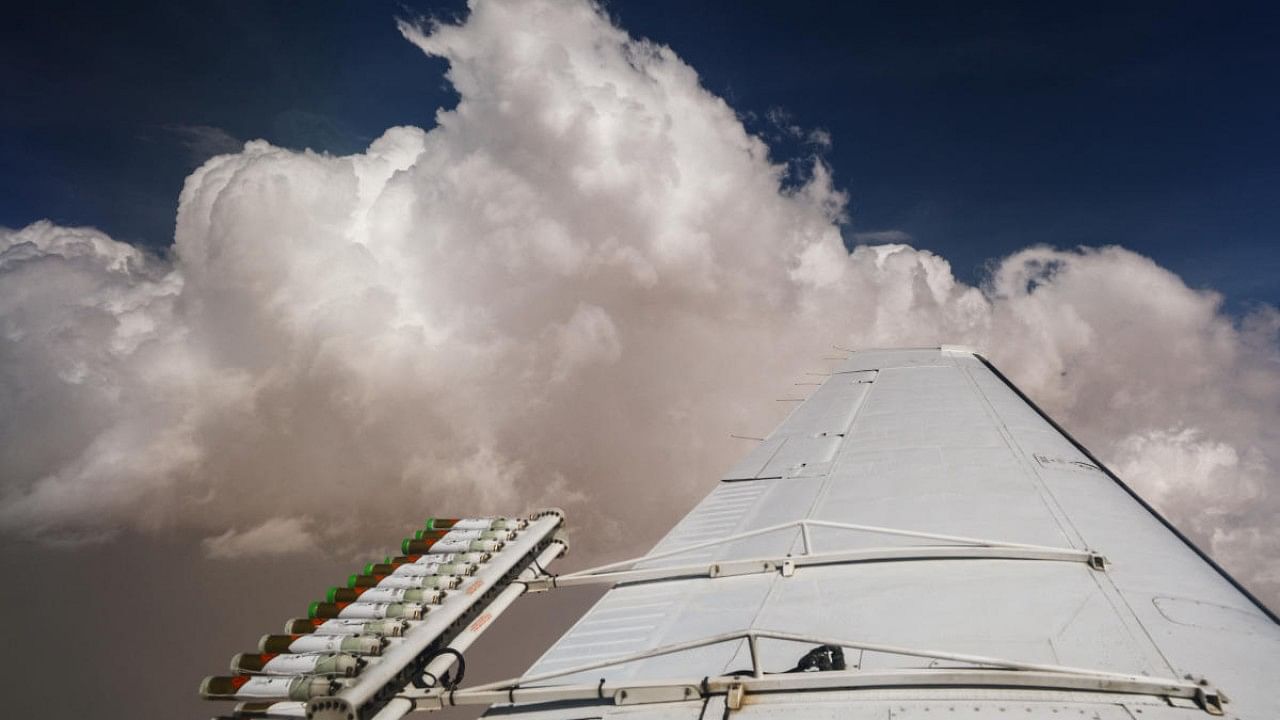
Grappling with their worst heatwave on record, Chinese officials are scrambling to significantly expand the country’s “cloud-seeding” programs — a controversial method of stimulating clouds to make them rain.
This is understandably a moment for desperate measures. China’s mighty Yangtze River has slowed to nearly a trickle in some stretches, destabilizing the country’s hydropower production and leaving hundreds of thousands of people without safe drinking water. But it’s also time to set the record straight on cloud seeding — a practice that’s rapidly expanding in the water-scarce American West.
Yes, forcing clouds to form rain and snow has, in fact, been proven to increase precipitation up to 15 per cent in certain regions, and the emerging private-sector cloud-seeding industry deserves more research and investment in a climate-stressed world. But cloud seeding is not a miracle solution to a drought crisis: The process of injecting tiny particles or chemical vapors into clouds to trigger rain is not a guaranteed, on-demand fix. At most, it should be considered a supportive measure in comprehensive, long-term water-management plans.
A few years ago, I traveled to Maharashtra, India, to observe a cloud-seeding program first-hand from the window of a turboprop flown into the belly of a monsoon cloud. Here’s what I learned: Cloud seeding is a promising technology — and one with rapid advancements in recent years — but there are a lot of “ifs.”
Dan Breed, a scientist who led cloud-seeding research at the National Center for Atmospheric Research, explains the challenge this way: “There’s little dispute that if you get the seeding material inside the clouds, it can enhance precipitation. The question is, by how much, and do you have the right conditions in the clouds, and will those clouds be there when you need them?”
China has by far the biggest cloud-seeding program in the world. It’s also common practice in countries from Thailand and Australia to the UAE and the US. In the past two years, Colorado, Idaho, Utah, Wyoming, and California have expanded their cloud-seeding operations — most notably to build up the snowpack over the Sierra Nevada mountains that melts into reservoirs.
There are two kinds of cloud seeding. In India, I witnessed “hygroscopic” or water-attracting seeding, the method often practiced in China, in which rockets or flares on the wing of a plane explode trillions of superfine salt particles into a cloud. Water molecules are attracted to salt, so they bond to the particles and grow into raindrops.
Cold-weather “orographic” cloud seeding has more proven results. Flares eject tiny flakes of silver iodide into the core of clouds as high as 60,000 feet. Silver iodide has a molecular structure similar to ice. As the particles drift down through the clouds, water gloms onto them as it would to ice, and snowflakes grow. A recent study conducted by the Center for Atmospheric Research used radar and meteorological modeling to show definitively that orographic seeding can increase snowfall.
In the decades since cloud seeding was first introduced, concerns that it might be environmentally toxic have dissipated. Sodium chloride is simply pulverized table salt, environmentally benign, and can get flushed out of lands below by the additional rainfall. And while silver iodide in large concentrations can be harmful, the amounts found in snowpack after cloud seeding are often undetectable. Studies have found that there was no more silver iodide in snow and soil samples in areas where clouds had been seeded than there had been before the campaigns — likely because the extra rains purged the system.
The technology is steadily improving. Most notably, scientists now have computer models to simulate the effects of silver iodide seeding, allowing scientists to pinpoint the most opportune locations for weather enhancement. As processing power improves, so will these models.
But no matter how sophisticated the modeling becomes, the method has little chance of helping during a drought emergency — mainly because you need storm clouds for successful seeding, and droughts by nature offer few of them. When storms do crop up, warm-weather seeding needs a particular form of moisture-rich cloud to get substantial precipitation increases. Even negligible increases might be worth the effort in a water-scarce region, but it’s not going to be a cure-all.
In the long term, the most effective use of cloud seeding is to practice it continually, seeding in wet and dry years alike to feed reservoirs and moisten soil.
Here’s what investors need to know: Cloud seeding is a niche industry that’s growing well beyond the US and China. The United Arab Emirates, for example, recently built a facility producing hundreds of cloud-seeding flares a week. Demand will likely only grow: In India, for example, a recent government study predicts that the demand for water in 2030 will be more than twice the country’s available supply. In the US, major drought events are expected to triple by mid-century.
But both lawmakers and investors must proceed cautiously: They can look to the Colorado River Basin Drought Contingency Plan for a good example of how cloud seeding can be integrated into a broader strategy for drought management that includes rigorous consumer-efficiency programs, water infrastructure, and river-management improvements, and new sources of drought-proof water supply such as recycled sewage.
In New Mexico, cloud-seeding proposals have recently been approved after resistance from critics who argue that humans shouldn’t fiddle with the weather. But humanity has been modifying natural systems for centuries, redirecting rivers with dams and reshaping landscapes with ancient and modern irrigation canals. At this point our reality is stark: We need all potential solutions on the table, and that means cautiously wielding controversial technologies to fight the far more glaring hubris of human-caused climate change.